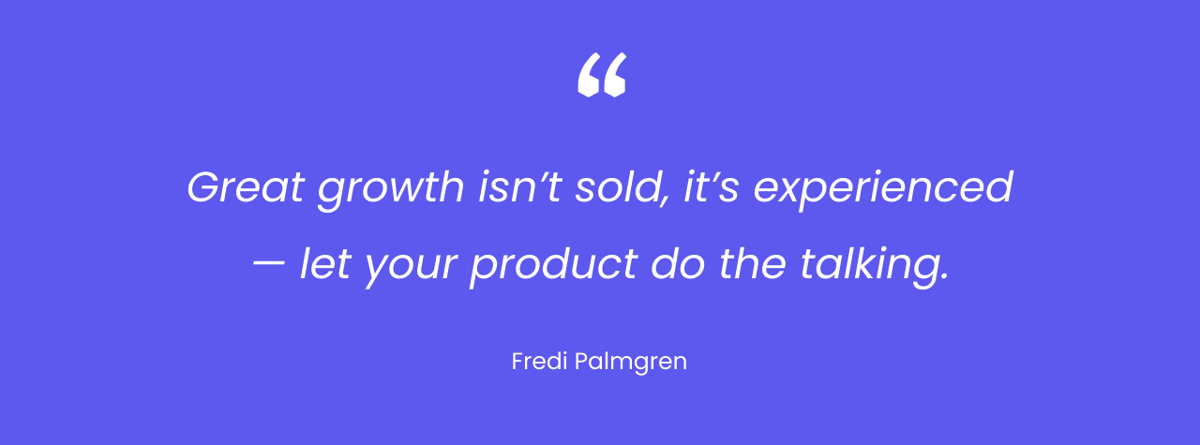In the evolving SaaS landscape, Product-Led Growth (PLG) has become a critical strategy for companies looking to scale efficiently. Unlike traditional sales-led approaches, PLG puts the product front and center, using it as the main driver for user acquisition, engagement, and retention. Here’s how to harness this strategy for your SaaS business effectively.
PLG is a business strategy where the product itself plays the central role in acquiring, retaining, and expanding users. Instead of relying primarily on sales teams, PLG allows potential customers to experience the product firsthand, often through freemium models or free trials. This method:
• Leverages the product’s inherent value to attract users.
• Focuses on user experience (UX) to drive organic growth.
• Reduces dependency on sales and marketing efforts by providing direct value through the product.

To implement a strong PLG framework, SaaS companies must adhere to several core principles:
• Prioritize User Experience (UX):
• Ensure the product is intuitive and enjoyable to use.
• Design seamless onboarding processes that help users quickly find value.
• Use in-app tutorials and guided tours to enhance the user journey.
• Adopt Data-Driven Decision-Making:
• Leverage analytics platforms like Mixpanel and Amplitude to track user behavior and engagement.
• Regularly analyze user feedback to make informed product improvements.
• Foster Cross-Functional Collaboration:
• Align product development, marketing, and customer support teams.
• Ensure all teams share a unified vision focused on enhancing user engagement.

Measuring the success of your PLG approach involves tracking several key performance indicators (KPIs):
• Activation Rate: The percentage of users who complete the onboarding process and start using the core features of the product.
• Customer Lifetime Value (CLV): Estimates the total revenue a business can expect from a single user throughout their relationship with the product.
• Customer Acquisition Cost (CAC): The total cost incurred to acquire a new user, including marketing and sales expenses.
• Viral Coefficient: Measures how effectively users refer new customers. A viral coefficient above 1.1 indicates exponential growth.
• Net Promoter Score (NPS): Gauges user satisfaction and the likelihood of customers recommending the product.
Implementing a PLG strategy effectively requires leveraging various tools to enhance user engagement and gather actionable insights:
1. Mixpanel: Tracks user behavior and engagement, providing data-driven insights to optimize product features. Learn more.
2. Amplitude: Offers advanced product analytics to understand user actions and identify key engagement drivers. Discover Amplitude.
3. Intercom: Facilitates real-time user feedback collection, supporting a customer-centric approach. Explore Intercom.
4. Hotjar: Provides heatmaps and session recordings to visualize user interactions and identify pain points. Try Hotjar.
5. Pendo: Enhances onboarding with in-app guidance and tutorials. Check out Pendo.
Examining real-world examples of PLG in action can offer valuable insights:
• Slack: Employed a freemium model, allowing teams to use basic features for free while offering premium upgrades. This strategy led to rapid adoption and strong user retention. Read more about Slack.
• Dropbox: Leveraged a viral referral program where users earned additional storage space for each successful invite. This approach drove exponential user growth. Learn about Dropbox’s growth.
• Notion: Offered a free version of its software, allowing users to experience its core features. The user-friendly interface and flexibility led to widespread adoption and conversion to paid plans. Discover Notion’s story.
While PLG offers significant benefits, implementing this strategy comes with its own set of challenges:
• Resistance to Change: Employees used to sales-led models may resist shifting to a product-centric approach. Solution: Provide clear training and communicate the advantages of PLG.
• Balancing Product Development and Marketing: It’s essential to maintain agile product development while aligning marketing strategies. Solution: Establish regular communication channels between teams to ensure coordination.
A well-designed viral engine is crucial for amplifying the impact of a PLG strategy:
• What is a Viral Engine?
• A systematic process that encourages users to refer new customers.
• Relies on word-of-mouth and incentivizes sharing, reducing marketing costs and driving organic growth.
• For a viral engine to be effective, the viral coefficient (the average number of referrals generated by each user) must exceed 1.1. This indicates that every user brings in more than one additional user, leading to exponential growth.

A successful PLG strategy requires a strong team structure, often involving multiple roles:
• Product Team: Focuses on continuous product improvements and feature development.
• Marketing Team: Drives awareness and supports the product’s value proposition through targeted campaigns.
• Sales Team: Manages upsell and cross-sell opportunities to enhance monetization.
• Customer Success Team: Ensures users are finding value, reducing churn, and promoting customer advocacy.
In many early-stage startups, the founder often wears multiple hats, handling product development, marketing, and sales. Understanding the workload and prioritizing time effectively is essential for success.
The future of PLG looks promising as more SaaS companies embrace this approach:
• Evolving Customer Expectations: Users now demand seamless experiences and immediate value. PLG aligns with these expectations, allowing users to explore the product on their terms.
• Advanced Analytics Tools: Innovations in analytics and user feedback technologies will enable more precise tracking of user behavior, making it easier for companies to iterate on their products.
• Long-Term Sustainability: Businesses that master PLG can drive sustainable growth by building a loyal customer base, reducing churn, and increasing word-of-mouth referrals.
Product-Led Growth is more than just a buzzword; it’s a transformative approach that puts the product at the center of the growth strategy. By focusing on delivering exceptional user experiences and leveraging tools that support data-driven decisions, SaaS companies can scale efficiently and build a sustainable business model.
For a deeper dive into mastering PLG for your SaaS business, check out the full blog post here: How to Master PLG for SaaS Companies.
Find out if MentorCruise is a good fit for you – fast, free, and no pressure.
Tell us about your goals
See how mentorship compares to other options
Preview your first month
